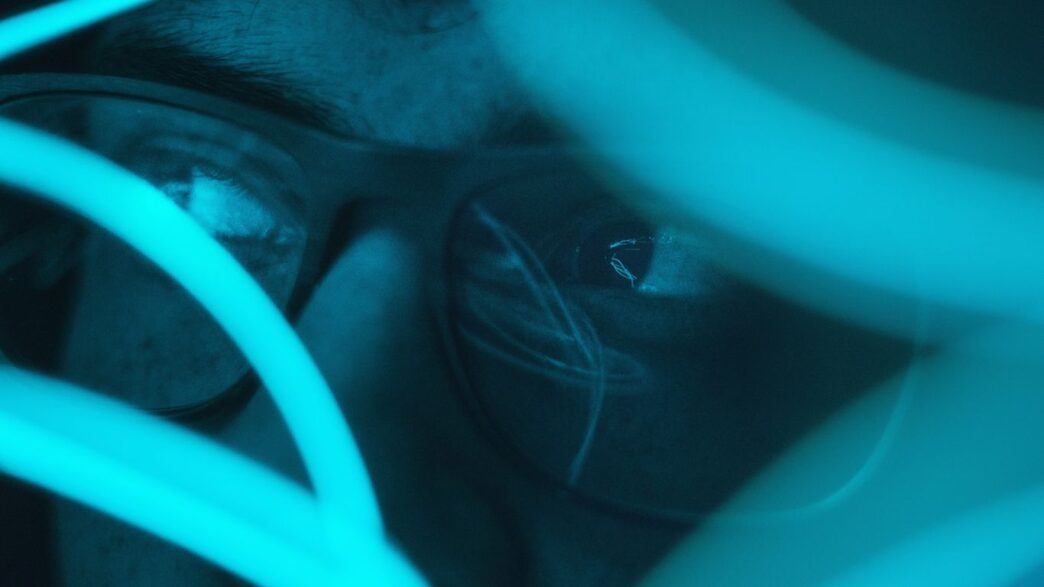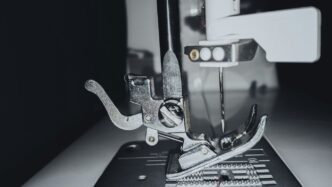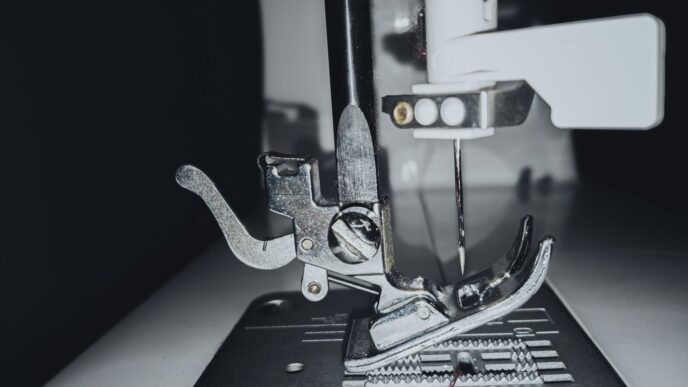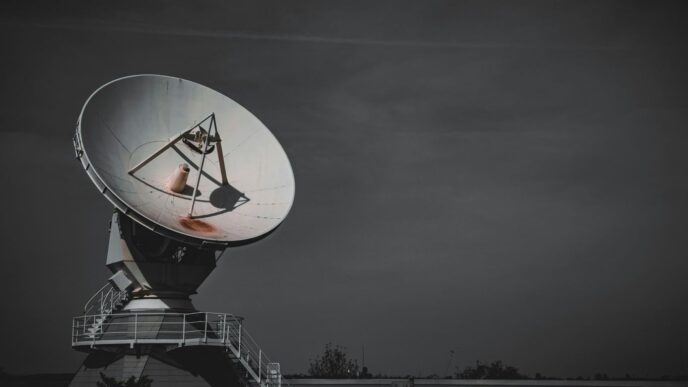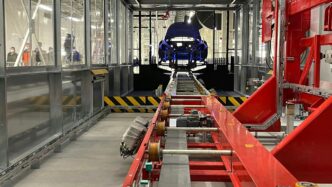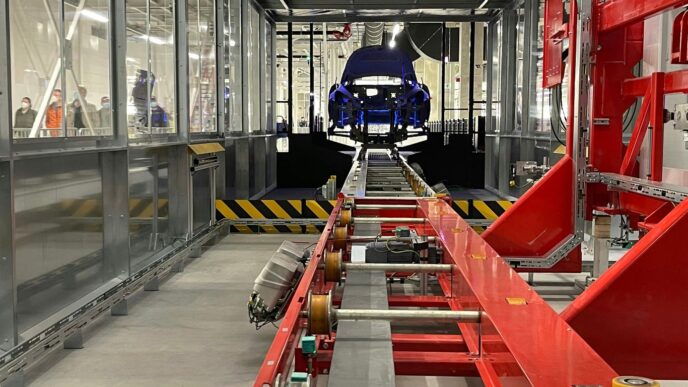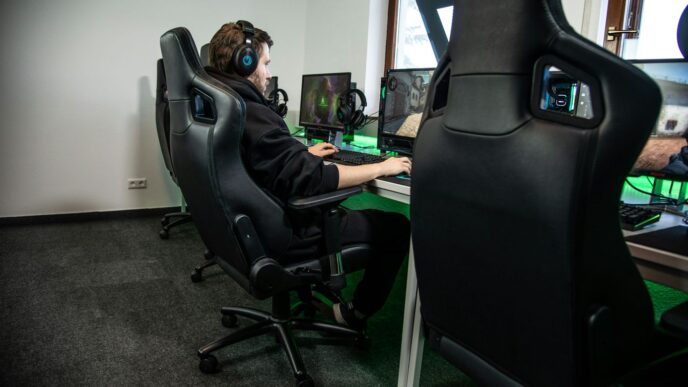Essential Camera Types for Self-Driving Cars
Self-driving vehicles in 2025 use a smart mix of cameras, each with its own job to do. If you’ve ever wondered why there are so many different camera systems on these cars, here’s why: every spot around the car needs to be covered to keep the vehicle safe and moving confidently.
Rearview Cameras for Collision Avoidance
Rearview cameras are all about preventing accidents while going in reverse. These cameras usually sit just above the license plate and give a clear, wide-angle view of what’s behind your car. They alert the system—and sometimes the passenger—about things you might otherwise miss, like a stray shopping cart or a small child. Modern rear cameras often work with parking sensors to help with tight spots. Usually, these features include:
- Night vision for backing up in low light
- Digital distance lines or guides for parking
- Integration with cross-traffic detection alerts
Front-Facing Cameras for Lane and Obstacle Detection
Front-facing cameras, usually tucked behind the windshield or in the grille, are the main "eyes" when your car is moving forward. They spot lane markings, read traffic signs, and detect vehicles, bicyclists, or debris in your way. They work day or night and often come with features like:
- High-resolution video for reading road lines and signs
- Automatic emergency braking support
- Integration with adaptive cruise control and lane-keeping systems
Side-View and Blind Spot Cameras
Side cameras play a critical part in reducing accidents from lane changes or merges. They’re mounted close to the side mirrors or below the A-pillars. Blind spot cameras take things further, watching areas drivers can’t see in their mirrors. Key reasons they’re in demand in 2025:
- Real-time monitoring of passing vehicles and motorcycles
- Assisting with automated lane switching
- Showing live feed in the dashboard during turns or merges
360-Degree and All-Around Camera Systems
If a car has a 360-degree system, it’s piecing together views from all sides to create a virtual "bird’s-eye" look. This is a game-changer for parking in tight garages or pulling out onto busy roads. These cameras provide a fully stitched, overhead perspective, merging images from front, rear, and side cameras. A quick breakdown:
| System | Number of Cameras | Coverage | Use Case |
|---|---|---|---|
| Standard | 1-2 | Rear or front/rear only | Basic reversing/parking |
| Surround | 4+ | All-around (360 degrees) | Complex parking and full awareness |
| Advanced ADAS | 6+ | Overlapping, high-res views | Self-driving, obstacle avoidance |
Overall, it takes a combination of all these cameras—not just for safety but to give self-driving computers the information they need to drive smoothly in any situation.
Critical Features to Look for in Cameras for Self-Driving Cars
Choosing the right cameras for self-driving vehicles is not just about grabbing the latest gadgets—it’s about covering basic needs that really do make or break the driving experience, especially as we barrel toward 2025. Below, I’m scratching beyond the surface and talking about what really counts when picking these cameras.
High-Resolution Imaging and Night Vision Capabilities
Crystal-clear imaging and strong night vision are absolutely necessary for reliable autonomous driving. Here’s what to look out for:
- Minimum 1080p (Full HD) is standard nowadays, but 4K is starting to become the new "normal." It’s crazy how much clarity helps with picking up road signs or small animals running across the road at dusk.
- Look for cameras with infrared or built-in LED illumination for true night vision, not just low-light assistance.
- Dynamic noise reduction and auto-brightening work together so that headlights or streetlights don’t ruin image quality.
| Feature | Entry Level | Preferred Standard |
|---|---|---|
| Resolution | 720p | 1080p-4K |
| Night Vision | Basic LED | Infrared/Full Color |
| Frame Rate | 30 fps | 60 fps |
Robustness Against Weather, Vibration, and Dirt
Let’s be honest—autonomous cars don’t get to pick when and where they drive. Cameras need to tough it out through rain, snow, mud, and all sorts of random road junk.
- Check for IP67 or higher weatherproof ratings so the camera won’t give out after the first big storm.
- Anti-fog lenses, internal heating elements, and solid shock mounting are must-haves.
- Some camera housings have self-cleaning features (little wipers or air jets) to keep visibility up when things get messy.
A lot of people forget vibration. Unless everything is really locked down tight, you’ll get fuzzy images every time you hit a pothole.
Wide Dynamic Range and Low-Light Performance
Bright sunlight one minute, shadow the next—it’s a nightmare for most cheap sensors. Cameras in self-driving cars must handle massive swings between light and dark without blinking.
Here’s what you should see in the spec sheet:
- Wide Dynamic Range (WDR) or High Dynamic Range (HDR) tech for balancing out the harshest glares and deepest shadows.
- Ability to handle sudden transitions—think popping out of a tunnel into bright sun.
- Consistent color and contrast, not washed-out blobs at dawn or dusk.
Choosing the right blend of these features means the car’s computer vision systems make smarter, safer decisions, especially as detection software becomes more advanced and reliable for things like identifying pedestrians even in tricky lighting.
Ultimately, it comes down to not cutting corners. If a camera can’t consistently turn out usable, sharp images regardless of the weather, grime, or time of day, it won’t help your self-driving car act safely or smartly.
Advanced Innovations in Camera Technology for 2025

The camera tech in self-driving cars has gotten a huge boost this year, and it’s changing how vehicles see the road. In 2025, smarter cameras don’t just record images—they process, interpret, and collaborate with other sensors in real time. Let’s look at a few of the main breakthroughs shaping today’s systems.
AI-Powered Object and Pedestrian Detection
AI is the secret sauce now. Cameras in modern vehicles use powerful machine-learning models that can:
- Spot pedestrians, animals, and cyclists even from odd angles or behind obstacles.
- Distinguish between different road signs and markings, regardless of weather or lighting.
- Predict the movement of detected objects, making emergency braking and driver alerts quicker.
This wasn’t always possible. Earlier systems would just detect a "moving object"—now, cameras identify if that object is a stroller, skateboarder, or delivery bot. These differentiations make real-world driving much safer.
Real-Time Image Stitching and 3D Reconstruction
Parking a car, taking a tight turn, or merging into traffic got a lot easier thanks to image stitching and 3D view tech. Modern vehicle cameras can now:
- Merge feeds from multiple cameras to give a seamless, all-around view on the dashboard display.
- Reconstruct a 3D map of the area around the vehicle for advanced path planning and obstacle avoidance.
- Use real-time correction to handle distortion or sudden movement.
| Feature | 2020 Cars | 2025 Cars |
|---|---|---|
| Maximum stitchable cameras | 4 | 8+ |
| 3D reconstruction accuracy (cm) | 15 | 3 |
| Processing delay (ms) | ~150 | ~25 |
So now, when you back up or thread through tight city streets, the on-screen info is sharper, faster, and more reliable.
Integration with LiDAR and Sensor Fusion
No camera operates in a vacuum anymore. By syncing vision with LiDAR, radar, and ultrasonic sensors, vehicles can:
- Resolve differences when sensors "see" the same object at different locations or times.
- Cross-check objects: if a camera spots a cyclist but LiDAR doesn’t, software can double-check and avoid false alarms.
- Build a detailed, multi-layered map of the world—using the best qualities of each sensor.
Here’s what that looks like in practice:
- Camera gets a glimpse of a blurry object in fog.
- LiDAR measures exact distance and size.
- Radar tracks movement, even if the object is partly hidden.
- Sensor fusion system merges all this info, so the car makes the right call about slowing down.
By 2025, this teamwork isn’t the exception—it’s expected in every reliable self-driving platform. These changes aren’t just little tweaks; they reshape how safe and predictable autonomous driving feels.
Placement and Configuration Strategies for Maximum Coverage
Getting the most out of self-driving car cameras starts with placing them in the right spots. Where you mount each camera can make or break the car’s field of view. For example, a front-facing camera usually nudges right onto the windshield, set up high to catch as much road as possible. Rearview cameras go above the rear license plate or near the trunk release—they need a clear shot for reversing and spotting trouble behind you. Side-view cameras usually hide in the side mirrors or the lower edge of the front doors. Some systems tuck them under door handles, but that risks blocking the view with dirt or road spray.
Here’s how coverage varies by placement:
| Camera Type | Typical Placement | Primary Coverage |
|---|---|---|
| Front-Facing | Windshield/Grille | Lane, traffic, obstacles |
| Rearview | Above license plate/trunk | Backup, parking, safety |
| Side-View | Mirrors/door panels | Blind spots, lane changes |
| 360-degree | Vehicle corners, roof | All-around vision |
Wiring and Integration with Vehicle Systems
It’s not just about sticking cameras on the car—it matters how they’re wired and synced with the car’s brains. Poor wiring causes delays or glitches in the feed, and that’s risky. A few things car designers always check:
- Use shielded, automotive-grade cables to cut down electrical noise.
- Route wires away from heat and moving joints, so you don’t wear through insulation.
- Test connections for water- and dust-proofing, which really matters over years of use.
- Plug cameras directly into the car’s main computing system for lower latency (especially key for features like immediate collision avoidance or advanced 360-degree views, as covered in advanced backup cameras).
Calibrating Cameras for Accurate Perception
Once cameras are in place, they need calibration—basically teaching each camera how to "see" the world the way the car expects. Calibration is about adjusting tilt, angle, and focus, and making sure the software lines up with real-world objects. Here’s a basic routine most auto techs follow:
- Place the car in a well-lit spot on flat ground.
- Use calibration targets (like special patterns) at specific distances.
- Run the car’s calibration software, which checks and adjusts alignment.
- Drive a short distance for the system to verify it sees reference objects right.
- If any camera is replaced or even nudged out of position, repeat calibration.
Even a slight change—a bump or sloppy cleaning—can throw off calibration, which means the car might miss obstacles or misjudge distances. It doesn’t sound complicated, but calibration is a step lots of people skip and end up regretting when things go sideways.
Internal Monitoring with In-Cabin Cameras
Cameras inside self-driving cars aren’t just there for show. They’re now a big part of keeping everyone inside the car aware and safe. These in-cabin systems watch for driver alertness, passenger behavior, and even nighttime activity, making modern vehicles smarter and more responsive.
Driver Monitoring Systems for Attention Detection
Driver monitoring systems (DMS) use cameras, often mounted near or on the dashboard, to track driver alertness in real time. This is not just about catching someone snoozing at the wheel. These cameras notice if your eyes wander off the road, if you close your eyes for too long, or if your head nods suggest you’re nodding off. The data, often processed with machine learning, can trigger alerts—sometimes just a gentle warning, other times something more insistent. Some systems even check for correct hands-on-wheel position or head position in case of handover during autonomous mode.
What Driver Monitoring Catches
- Drowsiness and micro-sleeps
- Distraction: looking at phones or away from the road
- Incorrect seating or posture (as in looking down or out the window for too long)
- Hands off the steering wheel
Privacy and Data Security Considerations
With cameras watching inside the car, privacy is a real concern. Manufacturers are under pressure to design systems that respect personal boundaries. Most in-cabin footage stays onboard, processed locally so no one can snoop remotely. Data is encrypted and access is tightly locked down, but trust is a recurring issue. People want to know:
- Who can view the captured video?
- How long is data stored?
- Can footage leave the vehicle, and under what circumstances?
Some carmakers let drivers opt in or out, and features like live streaming are getting phased out in most consumer vehicles.
Infrared Capabilities for Night Monitoring
Lighting inside a car isn’t always great, especially at night. Infrared cameras fix that. These don’t bother anyone with visible lights, but they can pick up facial features and eye movements in total darkness. That means night shifts or rideshare trips at 2 a.m. are just as safe as a drive in broad daylight.
A typical in-cabin camera spec sheet looks like this:
| Feature | Standard Cameras | Infrared Cameras |
|---|---|---|
| Works in low light/night | No | Yes |
| Detects eye movement clearly | No | Yes |
| Affects visibility for driver | Sometimes | No |
| Reliable during all hours | Limited | Excellent |
In 2025, most new self-driving models come with at least one infrared in-cabin camera as standard equipment.
Overall, these systems make the ride safer, but balancing privacy and robust performance is still a lively topic. Automakers are moving fast to find a fair middle ground, and things are changing year by year.
Ensuring Long-Term Performance and Reliability
Making cameras last in self-driving cars isn’t just about picking the best model—it’s a constant process. If a camera fails, it can mean bigger risks than just blurry footage. Reliable hardware is what keeps autonomous vehicles functioning safely, year after year.
Regular Maintenance and Cleaning Protocols
Self-driving car cameras are always exposed to harsh elements—rain, dust, heat, and even bugs. Setting up a strict cleaning schedule is key. Here’s a basic checklist most operators follow:
- Wipe lenses with non-abrasive cloths to stop build-up that blurs vision
- Inspect camera mounts for vibration or looseness after long drives
- Replace cracked or damaged covers right away
- Use lens treatments that repel water and dirt
Some fleets have automated cleaning systems, especially for vehicles in constant use. Drivers and technicians still need to visually check for damage—automation isn’t foolproof.
Firmware Updates and Software Enhancement
Camera technology doesn’t stand still. Firmware updates roll out new features and address bugs. Keeping systems updated helps maintain accuracy and safety. Here are a few things to keep in mind:
- Schedule updates during planned downtime to avoid interfering with trips
- Test software enhancements on a few vehicles before rolling them out fleet-wide
- Document all updates for future troubleshooting
Camera performance is tightly linked to the AI that interprets the footage. Software improvements can make a bigger difference than hardware upgrades, given how fast AI-driven tech is moving, as we see with emerging artificial intelligence in automation.
Testing Procedures for Consistent Operation
Testing isn’t a one-time event. It’s a routine. Here’s a look at standard procedures:
| Test Type | Purpose | Frequency |
|---|---|---|
| Calibration check | Ensures image alignment and clarity | Monthly |
| Function test | Detects faulty sensors | Weekly |
| Environmental | Verifies performance in rain/dust | Quarterly |
Other steps include:
- Simulate poor lighting and tough weather to spot camera weaknesses.
- Compare real-world images to expected outputs.
- Manually review video feeds for anything the AI might miss.
Quality assurance doesn’t end once the car hits the road. Even small glitches can add up and increase the chance of failures over time. Sticking to a solid routine—cleaning, updating, and testing—keeps cars operating safely and reliably, even as new tech rolls out every year.
Selecting the Right Camera Setup by Vehicle Type
Choosing a camera system that actually fits your vehicle’s style and size is more important than it sounds. A small sedan simply doesn’t have the same blind spots or coverage needs as a long-haul truck or a trailer that’s fifty feet long. Let’s break down what works best based on what you drive.
Recommendations for Passenger Cars and SUVs
Most daily drivers want basic coverage, but newer models are using more cameras each year. Here’s what tends to work:
- 2 to 4 cameras: Rearview, dash/front-facing, and (optionally) side-view
- Parking assistance is easier with a rearview and backup camera
- Extra side-view cameras help with lane changes, especially in larger SUVs
- Optional: A simple 360-degree system on premium trims for added parking help
| Camera Location | Typical Use | Benefit |
|---|---|---|
| Rear (trunk) | Reversing, parking | Prevents back-end collisions |
| Front (windshield/grille) | Obstacle & lane detection | Adds safety at intersections |
| Sides (mirrors) | Blind spot coverage | Easier merges & turns |
| Interior (dash) | Driver/occupant monitor | Monitors attention/safety |
Special Requirements for Commercial and Fleet Vehicles
Fleet vehicles and delivery vans face longer hours, busier roads, and different risks. They usually require stronger setups:
- 5 or more cameras: Rear, front, both sides, and an interior camera (for accountability)
- Night vision and robust housings for longer operation
- Remote access for fleet managers
- Cameras covering cargo loading areas or sensitive zones if needed
Benefits include:
- More visibility for tight turns in urban settings
- Greater evidence for insurance and liability situations
- Real-time driver behavior monitoring
- Adaptations for refrigerated or hazardous cargo
Considerations for Trailers and Autonomous Fleets
Towing a trailer or running a completely autonomous shuttle is a whole different ballgame. The camera configuration here is about full situational awareness:
- 5 to 6+ cameras: Rear, dash/front, both sides, trailer rear/side, and sometimes extra exterior cams
- Weatherproof, wireless designs for trailer setups
- Advanced ADAS cameras for autonomous operation
- Emphasis on systems that integrate with LiDAR for object detection and pedestrian spotting
Things to look for include:
- Seamless wireless pairing between tractor and trailer cameras
- Synchronized video streams for stitched 360-degree views
- Fast-swappable or remotely managed hardware in fleet environments
| Vehicle Type | Recommended Cameras | Special Features |
|---|---|---|
| Passenger Car | 2-4 (rear, front, sides) | Parking lines, side assist |
| SUV/Truck | 4-5 (rear, front, sides, int) | Off-road & blind zone coverage |
| Commercial Van | 5 (all corners + cabin) | Remote live viewing, alerts |
| Trailer/RV | 5-6 (incl. trailer cameras) | Wireless cam-to-cab feed |
| Autonomous Fleet | 6+ (all angles, ADAS tie-in) | Integration with sensors, 3D |
Every vehicle brings its own quirks. Factory setups can usually be upgraded aftermarket, just make sure the system is compatible with your existing dash display or add-on monitor. Test for fit and image quality before drilling any holes or sticking anything down for good.
Regulatory and Ethical Considerations in Camera Deployment

Making sure camera systems in self-driving cars follow all the right rules is a big topic. In 2025, car makers have to deal with a patchwork of local and international safety regulations. These laws don’t just cover how well the cameras work—they include rules about where data goes, who can see it, and for how long. Cameras must meet government-mandated safety benchmarks, including resilience during crashes and reliable video storage. Regulations such as the GDPR and the California Consumer Privacy Act are forcing companies to build better privacy protections by default.
Here’s a quick breakdown of core regulatory goals:
- Verification that cameras don’t fail under tough weather or collision conditions.
- Standards for data retention—how long footage is kept and under what circumstances.
- Regular certification and recertification of both hardware and software.
Countries keep tightening privacy and safety controls, so keeping up with emerging automotive technology trends is a constant chore for the industry.
Public Perception and Trust Issues
The public’s trust isn’t a given—especially when in-car cameras record every move. Some folks worry about being watched, even if the tech is supposed to make them safer.
- Transparent policies: Car manufacturers need to explain, in simple terms, what gets recorded and why.
- Visible camera notifications: Clear signs that cameras are active help fight the feeling of secret surveillance.
- Feedback channels: Making it easy for drivers and passengers to ask questions or file concerns.
When people feel they have some control or knowledge over camera use, they tend to accept these systems more readily.
Implications for Data Storage and Use
Data from self-driving car cameras is valuable, but handling it brings real responsibility. Storing, sharing, and deleting footage must meet legal and ethical standards, especially for footage that might identify individuals.
Some key practices in 2025:
- Strict access permissions: Only trained, authorized individuals get to review images—often with full logging of who accesses what, and why.
- Anonymization tools: Automated blurring of faces and license plates before footage is used for research or product improvement.
- Automated deletion: Footage is automatically erased after a set period, unless there’s a safety or legal reason to keep it.
| Data Practice | 2025 Industry Standard | Notes |
|---|---|---|
| Access Logging | Mandatory | Required for audits |
| Data Retention | 30 to 90 days (standard cases) | Exceptions for incidents |
| Face/Plate Masking | On by default for external data sharing | Privacy-focused default |
In short, the laws and expectations around camera tech are always changing, but companies that stay open, follow the rules, and respect people’s privacy are more likely to succeed.
Conclusion
Picking the right camera for a self-driving car in 2025 isn’t as simple as grabbing the latest gadget off the shelf. There’s a lot to think about—where the camera goes, what it needs to see, and how it works with all the other sensors in the car. The tech is moving fast, and every year brings new features, from better night vision to smarter object detection. But at the end of the day, it’s about finding a setup that keeps everyone safe and helps the car make good decisions on the road. Whether you’re building a fleet or just curious about the future, it’s clear that cameras are a big part of what makes self-driving cars possible. As the technology keeps changing, staying up to date with the latest camera options will make a real difference in how these cars perform and how safe they are for everyone.


